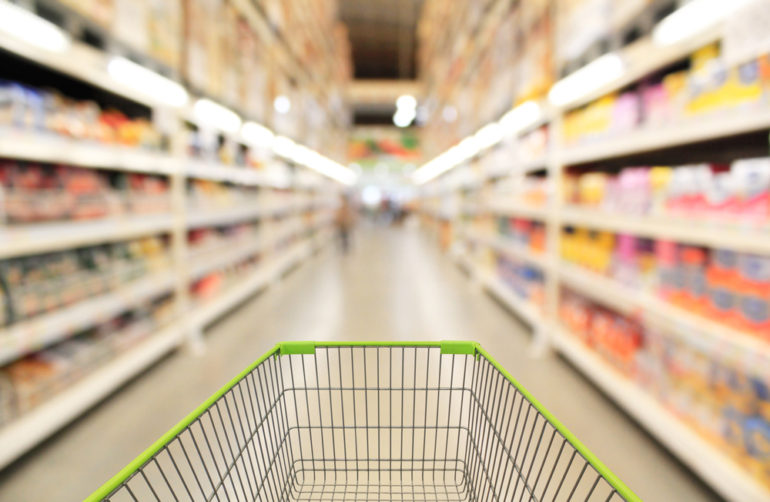The coronavirus outbreak has expedited the expansion of e-commerce, changed the brick-and-mortar retail sector, and created new operational challenges for firms in just a few months. It would have been difficult to imagine such drastic shift even a year ago.
The industry is hungry for a better understanding of the future against this backdrop of change. While the causes that drive the industry are numerous, customer preferences, technological advancements, economic upheavals, and market pressures can all be identified as key trends.
Following are trends that might assist retailers and consumer goods companies plan their strategy and investments:
• Premiumization and Commoditization:-
Consumers now have more options, competition is expanding, and industry convergence has altered business dynamics. Many shops have resorted to producing private labels in order to stay competitive, as they can create 33% better margins and provide them more control over production, branding, price, and promotion. COVID-19 has accelerated this trend, with dollar sales of private-label products rising 16% year over year in 2020 across all retail outlets. While inexpensive products still account for the majority of private-label sales, premium private labels have grown in popularity, rising from 16.2 % to 20% in the last three years.
Increasing income gap, as well as the reality that purchase behaviours and drivers alter by category as consumers’ finances deteriorate, will almost certainly influence consumer decisions in the future. Customers’ opinions of their financial status will undoubtedly impact whether they buy low-cost or high-end brands as the epidemic develops.
• Indefinable digital profits:-
Since the outbreak, the expansion of digital commerce for retail and consumer goods has intensified. Online sales reached $67 billion in July, up 58 %. Mobile sales have been increasing for a while, accounting for over 73 % of the $73 billion in e-commerce growth in 2019. However, because revenue per visit on mobile is 4 times lower than desktop-based e-commerce, this move has had a significant negative impact on traditional business KPIs. While the appeal of digital expansion remains great, the ability to pursue and manage that growth financially is under tremendous and ever-increasing pressure.
• Physical shape shift:-
Physical retail businesses were changing even before the pandemic, with the average square footage per store decreasing every year from 2012 to 2019. When COVID-19 struck, over 65% of retail space was forced to close for the time being. Consumer spending is at an all-time low, and that, along with pre-existing balance sheet issues, might mean that some temporary store closures become permanent.
The role of the physical business is set to shift as the epidemic generates growing consumer demand for buy-online/pick-up-in-store solutions. To address the demand for curbside pickup, many merchants have already transformed their storefronts into order fulfilment facilities.
• New models and growing impact:-
To improve growth and fulfil evolving consumer expectations, retailers and consumer products companies are continuing to expand outside of their traditional revenue patterns. Before the pandemic, direct-to-consumer enterprises, subscription services, marketplaces, and resale platforms, among other alternative models, were all gaining traction. COVID-19 has prompted more atypical models to be used in “critical” areas like food, groceries, and pharmacy.
• Convenience: the new battleground:-
Consumers are nine out of ten times more likely to choose a shop based on convenience, with convenience accounting for 46% of all online sales. Nearly half of customers are willing to spend more money in exchange for convenience as a result of the epidemic.
Today, convenience entails contactless purchasing, same-day delivery, and availability of inventory. Since the outbreak, there has been an increase in mobile payment usage, delivery app downloads, and demand for buy-online, pick-up-in-store options all of which are likely to continue.
• Health and sustainability:-
Consumer spending patterns for health related products have changed dramatically as a result of COVID-19. In recent months, more than 52% of customers have boosted their expenditure on hygienic items such as hand sanitizer and medicines. Also, sales of sustainable items and organic produce have increased, but it is unclear whether consumers like these products or merely bought them because alternative options were out of stock.
In the future, income disparities will undoubtedly play a significant role in the expansion of the health and sustainability businesses. Pandemic had resulted in a job loss or salary drop for more than half of lower-income households by April, compared to only 36% of upper-income households. Lower-income households may be limited in their expenditure on health and sustainability as a result of this disproportionate economic pressure.
• Alliance and disintegration:-
Many consumers transferred their purchasing to chosen businesses that could provide essentials as well as conveniences like same-day delivery and real-time inventory updates when “non-essential” physical retail sites shuttered during the epidemic. Pandemic’s consequences could continue to encourage retail consolidation, resulting in a situation in which a small number of enterprises emerge as stronger at the expense of smaller or independent businesses.
At the same time, the pandemic has accelerated a long-term trend in the packaged goods industry: disintegration. Third-party sellers account for more than half of the sales of the largest marketplace retailer. It’s unclear if consumers’ turn toward smaller competitors for packaged goods is a legitimate sign of demand or just a symptom of supply chain bottlenecks and stockouts.
